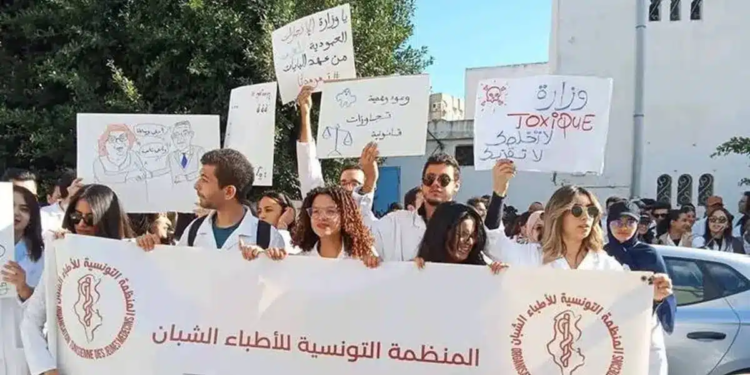The plenary session of November 19 devoted to the budget of the Ministry of Health for 2026 took place in a particular context: outside Parliament, young doctors — interns and residents — observed a national strike and a demonstration to demand the application of the agreement of July 3, 2025. Between announced progress, tensions on the ground and structural constraints, the Tunisian health system continues its transition.
With 4.350 billion dinars, the 2026 budget records an increase of 8.75% compared to 2025.
This effort helps support essential expenses in the sector, where the payroll – 2.86 billion dinars – remains a central item. The investment credits, set at 780 million dinars, should support the gradual modernization of establishments and the improvement of priority equipment. The structure of the budget thus reflects a desire for continuity and stabilization.
A mobilization of young doctors which highlights unmet expectations
Before the Assembly, the young doctors expressed their demands through a series of slogans – “O ministry of achievements, slavery is over”, “The ministry remains the same and the doctor is the victim”, “Illusory promises, legal excesses”, “Public health is a duty” – a reflection of a persistent unease around the application of the commitments made in July 2025 concerning the salary increase, housing conditions for certain categories and the payment of late on-call duties. The negotiations held the day before did not make it possible to reconcile the positions, several deputies nevertheless assured that they would relay these concerns in the budgetary debate.
A digital transformation that is gradually advancing
Digital transformation constitutes one of the structuring axes of the ministry: telemedicine is now operational in 22 regional hospitals, and 31 structures are connected to remote medical imaging. These initiatives improve access to certain specialized services and contribute to reducing a persistent territorial gap, while being part of a gradual transition which must still be accompanied by a strengthening of the workforce and better hospital organization.
Medicines chain and CNAM: two pillars under tension
The entry into activity of the National Medicines Agency marks an important step in the regulation of the sector, with the objective of improving transparency and security of supply; but the Central Pharmacy remains faced with financial tensions and occasional disruptions, accentuated by increased demands from international suppliers. At the same time, the maintenance of third-party payment between the CNAM and pharmacies, confirmed after difficult discussions, recalls the determining role of the Fund in access to care: the continuity of the system, payment deadlines and coordination between players remain essential issues for the stability of the system.
Prevention, public health and human resources: continuity and issues of attractiveness
The 2026 budget devotes 55 million dinars to vaccination and 21.7 million to the fight against tuberculosis and rabies, making it possible to consolidate achievements in public health. At the same time, the 4,000 tenures and 1,000 regularizations announced aim to stabilize human resources, even if the attractiveness of medical careers – in a context of sustained professional emigration – continues to raise the question of working conditions, career prospects and training capacities in the sector.
Also read:








